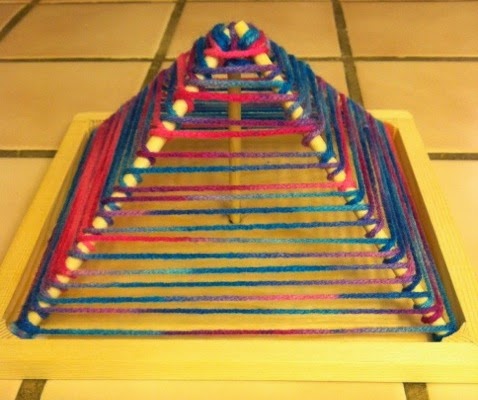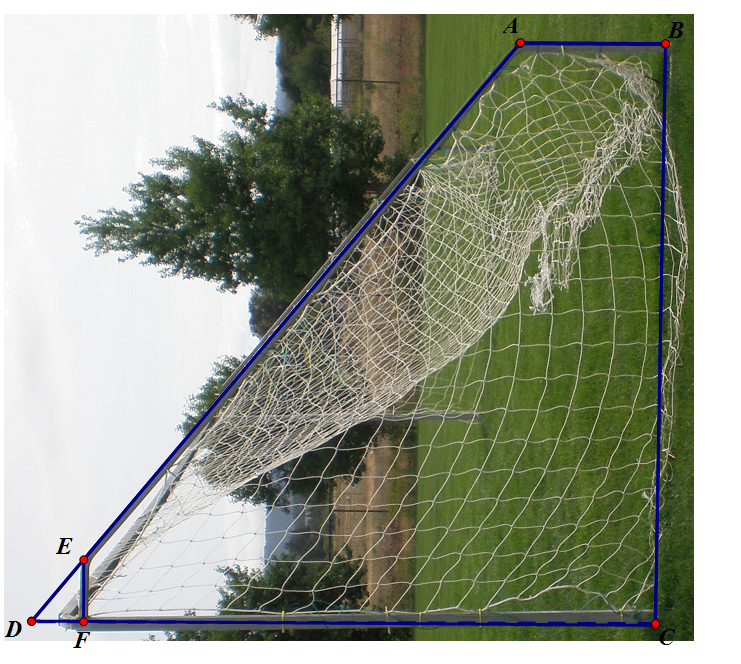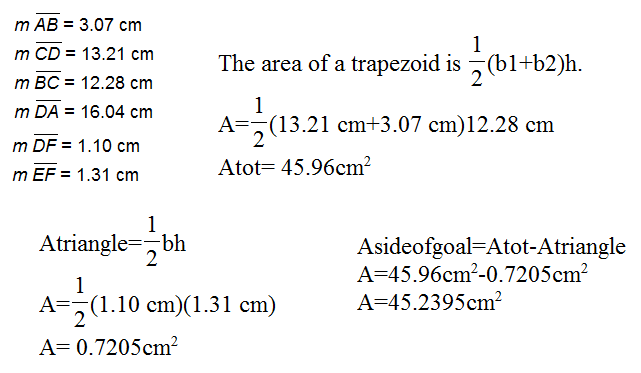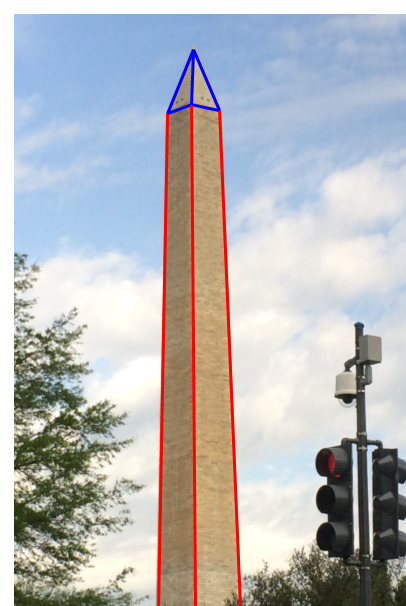Oakwood's Geometry Hunters
Students from Oakwood High School (Morgan Hill, CA) noticing cool examples of geometric objects and concepts in the world around them.
Tuesday, May 20, 2014
Turtle Tank
Since we have been learning about volume, I wanted to put our learning to work. My brother said that he wasn't sure how many gallons his turtle tank could hold, so I measured all the lengths and used the formula. It turns out that the volume of this tank is about 44 US gallons. Note, if my brother ever wanted to figure out how many gallons he has currently in the tank, we could just use the same formula, find the volume, and subtract that from the original 44. (TF~2)
Saturday, May 17, 2014
Pyramid
This is something I made a few years ago for a school project. It is in the shape of a regular square pyramid.
With the given dimensions, the pyramid would have a volume of about 572.33cm3 and a lateral area of 344.2008cm3. (~CS1)
Area of the Side of a Goal
I noticed that the side of the soccer goal was almost a trapezoid and I decided to use it to find area.
To find the area of the side I extended the lines to make a trapezoid than subtracted the area of the small triangle.
Using GSP measurements the area of the shape made by the side of the goal is 45.2395cm^2.
(NW5)
To find the area of the side I extended the lines to make a trapezoid than subtracted the area of the small triangle.
(NW5)
Tennis Balls
I was on my way to hit the courts when I came across a tennis ball along with a can of three tennis balls. I remembered a math problem with a sphere and a cylinder and comparing their volumes. So I decided to insert the image into gsp and use geometry in my real life. I used the formula for the volume of a cylinder and the formula for the volume of a sphere and found that the volume of the ball was around 3 cm cubed and the volume of the cylinder was around 13 cm cubed. Meaning that the space in between the balls would account for about one extra ball. (~WM5)
Friday, May 16, 2014
The Presence of the Golden Ratio
In infamous Golden Ratio has been seen in everything from art, to nature, to even the proportions of human beings. It has continued to astound artists, scientist, and mathematicians for centuries.
Simply put, the Golden Ratio is a special number found by dividing a line into two parts so that the longer part divided by the smaller part is also equal to the whole length divided by the longer part.
The unique properties of the Golden Rectangle provides another example. The Golden rectangle is one in which the ratio of the sides a/b is equal to the golden mean (also referred to by the Greeks as phi), can result in a repeating process that can be repeated into infinity — and also takes on the form of a spiral. It is the most common form of the Golden Ratio in nature.
Countless examples around us are in the proportion of the Golden Ratio.
Some of the most interesting and unique examples of the Golden Ratio which cause us to think that things being in the Golden Ratio are not merely a coincidence are shown below:
The Nautilus Shell:
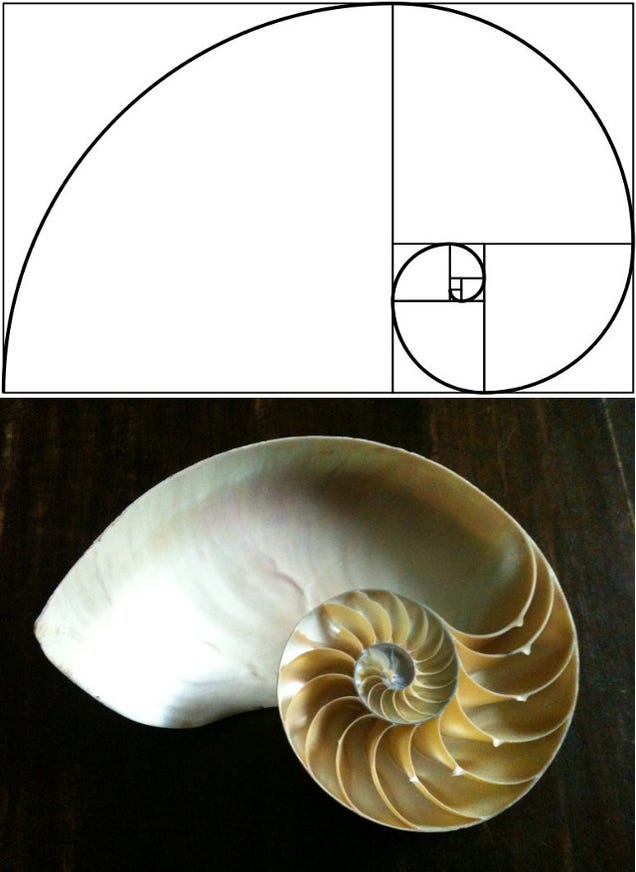 |
| The Nautilus Shell follows the "logarithmic spiral", also known as the result of the proportion of the Golden Rectangle. |
Galaxies:
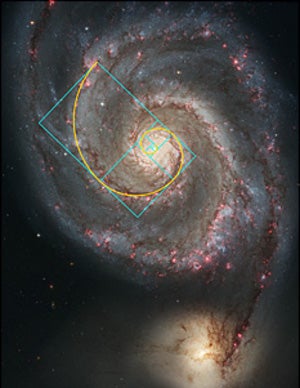 |
| The Milky Way galaxy contains several "spiral arms", each of them a logarithmic spiral and containing the proportions of the Golden Ratio. |
Thursday, May 15, 2014
Memorable Geometry
On our 8th grade East Coast trip, we visited the Washington Monument. I was able to take a lot of great photos of it and was also able to find some hidden geometry. The part of the monument outlined in red is a right rectangular prism. It's a bit hard to see, but imagine looking down on it from the sky. This prism makes up the base of the monument and it has four lateral faces. It also has four lateral edges and two bases. Theorem 12-1 states that the lateral area of a right prism equals the perimeter of a base times the height of the prism, or L.A. = ph. Theorem 12-2 states that the volume of a right prism equals the area of a base times the height of the prism or V = Bh. Finally, the surface area of the prism equals the lateral area plus 2 times the area of the base.
On the very top of the monument rests a pyramid. It is outlined in blue in the picture. It also has four lateral faces and lateral edges. The pyramid's vertex acts as the top of the monument and it shares one of the prism's 2 bases. Theorem 12-3 states that the lateral area of a regular pyramid equals half of the perimeter of the base times the slant height or L.A. = 1/2pl. Theorem 12-4 states that the volume of a pyramid equals one third the area of the base times the height of the pyramid or V = 1/3Bh. Lastly, the surface area of the pyramid equals the lateral area plus the area of the base. So, not only does the Washington Monument represent one of our greatest founding fathers, but it represents the beauty of geometry. ~MG1
Subscribe to:
Posts (Atom)

